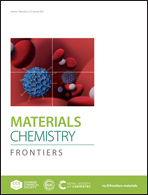Ni-based ultrathin nanostructures for overall electrochemical water splitting
Abstract
Hydrogen produced by electrochemical water splitting is considered to be a sustainable fuel source, an ideal way to solve the energy problem and its environmental challenges. However, industrial production of hydrogen from water splitting is mainly hindered by sluggish kinetics of the oxygen evolution reaction (OER) at the anode and the hydrogen evolution reaction (HER) at the cathode in an alkaline solution due to the difficulty in forming binding protons. Thus, the construction of a highly active and cost-effective catalyst with abundant oxygen vacancies is critical for enhancing the reaction efficiency and decreasing the required overpotential. Due to earth-abundance and electrocatalytic activities, Ni-based ultrathin nanostructures (Ni-utNSs) have attracted immense attention for overall water splitting. Herein, we have presented a complete summary of recent advancements in Ni-utNSs for overall electrochemical water splitting. After discussing unique advances in Ni-utNSs, we discussed their properties and crystal structures. The HER, OER, and oxygen reduction reaction (ORR) mechanisms were briefly discussed. We also discussed several Ni-utNS manufacturing techniques, as well as in situ and ex situ characterization and computer modeling. Furthermore, the electrochemical water splitting of Ni-utNSs is addressed. This review can help readers understand the recent progress of Ni-utNS catalysts and gain insight into the rational design of Ni-utNS catalysts with high electrocatalytic activity.

- This article is part of the themed collection: 2023 Materials Chemistry Frontiers Review-type Articles


 Please wait while we load your content...
Please wait while we load your content...